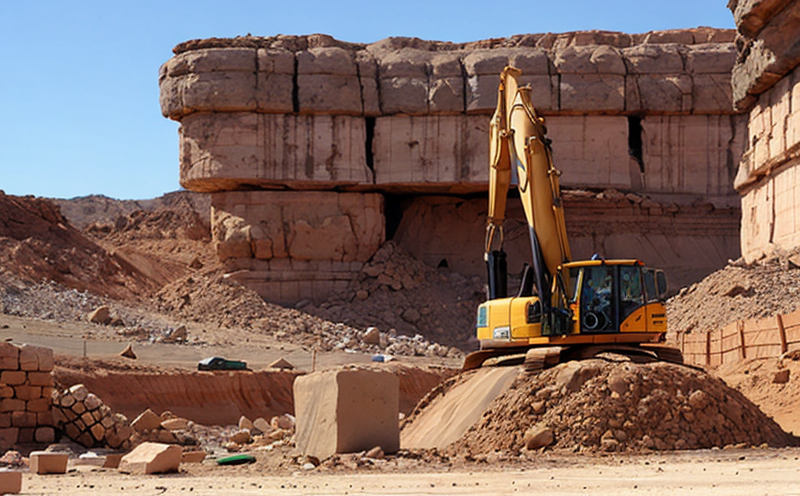ISRM Suggested Method for Shear Strength of Rock Joints
The International Society for Rock Mechanics (ISRM) suggested method for shear strength testing of rock joints is a critical procedure used to evaluate the mechanical behavior of rock joints, which are significant in mining operations. These joints can influence excavation stability, ground support requirements, and overall mine safety.
Shear strength tests provide data on the frictional resistance offered by the joint surfaces when subjected to shear loading. This information is crucial for designing effective ground support systems and ensuring that excavations remain stable under load. Understanding these parameters helps in predicting potential failures and implementing necessary mitigation strategies before they occur.
The test method involves preparing a specimen from the rock joints of interest, typically by splitting them along natural planes or creating parallel planes through drilling and blasting if necessary. Specimens are then tested using standardized equipment that applies shear stress to the joint surface until failure occurs. The maximum shear strength achieved during this process is recorded as an indicator of the joint's integrity.
For accurate testing, it’s essential to follow ISRM recommendations closely regarding specimen preparation, loading conditions, and measurement techniques. Non-compliance can lead to inaccurate results that may compromise safety assessments or design decisions.
The ISRM method has been widely adopted globally due to its robustness and applicability across various rock types found in mining environments. By adhering strictly to this protocol, laboratories ensure reliable data which supports informed decision-making processes within the industry.
Understanding the nuances of shear strength testing requires familiarity with relevant standards such as ISRM S63-99, which provides detailed guidelines on how to conduct these tests properly. Compliance with these standards ensures consistent results regardless of location or laboratory performing the test.
| Applied Standards |
|---|
| ISRM S63-99: Recommended Practice for Shear Testing of Rock Joints |
| EN 12805: Geotechnical Investigation of Slopes and Excavations in Rock - Determination of the Friction Angle by Direct Shear Test |
In conclusion, mastering the ISRM suggested method for shear strength testing enables accurate assessment of rock joint characteristics. This knowledge base is invaluable for maintaining safe working conditions within mines while optimizing operational efficiency through informed design choices.
Applied Standards
- ISRM S63-99: Recommended Practice for Shear Testing of Rock Joints
- EN 12805: Geotechnical Investigation of Slopes and Excavations in Rock - Determination of the Friction Angle by Direct Shear Test
Eurolab Advantages
Eurolab brings unparalleled expertise to ISRM shear strength testing, ensuring precision and reliability. With state-of-the-art facilities equipped with modern instrumentation, Eurolab consistently produces accurate results that meet or exceed international standards.
Our team of experienced geotechnical engineers specializes in preparing specimens according to ISRM protocols, guaranteeing that each test reflects real-world conditions accurately. This attention to detail ensures consistent quality across all our services.
The use of advanced testing equipment allows us to capture detailed data points throughout the entire loading process, providing comprehensive insights into joint behavior under shear stress. Additionally, Eurolab’s strict adherence to ISO 17025 accreditation guarantees that all tests are conducted in a controlled environment compliant with global quality assurance practices.
By leveraging these advantages, Eurolab not only meets but exceeds customer expectations by delivering precise and actionable data needed for robust mine planning and execution.
Why Choose This Test
- Precise evaluation of rock joint frictional resistance
- Supports safe mine design and construction practices
- Provides comprehensive data for robust decision-making processes
- Achieves consistency with international standards
- Offers accurate, reliable results supported by experienced professionals
- Ensures compliance with industry best practices
- Delivers actionable insights into rock joint behavior under shear stress conditions





